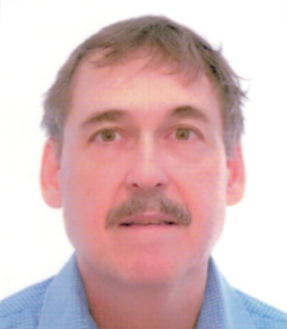
Peter Kramer
is a former research scientist and university professor who founded Ingenium Patents LLC which specializes in providing services to inventors and companies developing new products. In addition to patent drafting and prosecution they conduct critical research into patent and non-patent literature required by R&D managers and technical personnel. Peter is admitted to practice before the United States Patent and Trademark Office. Dr. Kramer has been awarded the National Research Service Award, National Institutes of Health, USA. (1985) and National Science Foundation instrumentation grant, Principal Investigator (1992). He is coauthor of Human Physiology, Biochemistry and Basic Medicine and has published numerous peer reviewed research papers in the field of enzymology. He is also a member of the American Chemical Society, AAAS, and Mensa, and is a pretty good C#/.NET/Windows Forms programmer.

Recent Articles by Peter Kramer
If the claim is directed to an abstract idea, then abstractness is an essential property of the claimed subject matter as a whole. As such, a claim directed to an abstract idea cannot be transformed to possess non-abstractness by whether or not it embodies an inventive concept, since whether the inventive concept is inventive or not depends upon when the concept was conceived, which is an accidental property rather than an essential property of the claimed subject matter… Mayo may make sense for natural laws and physical phenomena but given the very different nature of abstract ideas the test logically falls apart when one thinks they can turn something that is by its fundamental nature abstract into something that is not abstract.
It is well known that hindsight reconstruction is an insidious error that infects patent prosecution. The Federal Circuit has noted that it is a difficult task to avoid “subconscious reliance on hindsight” and tools are available to “inoculate the obviousness analysis against hindsight”. However, it is well known that practitioners could benefit in countering the pernicious problem of subconscious hindsight directed analysis with additional tools. This article is intended to provide an additional tool outlining a new analytical approach to detecting hindsight: 1) identification of a proxy problem upon which an “obvious” advantage is predicated, and 2) showing that either a) the proxy problem is secondary to the problem solved by the inventor and would have been insufficient to drive advancement of the art, and that the examiner has failed to show that a person of ordinary skill in the art (POSITA) would have regarded the proxy problem as sufficiently significant so as to require solution, or b) a showing that the proxy problem posed to POSITA presupposes the problem and its solution as solved by the inventor and is derivative. Once it is shown that the proxy problem is subsidiary or presupposes the problem solved by the inventor it becomes a less difficult task to show that the invention was not considered as a whole or that the problem was improperly phrased.

![[IPWatchdog Logo]](https://ipwatchdog.com/wp-content/themes/IPWatchdog%20-%202023/assets/images/temp/logo-small@2x.png)